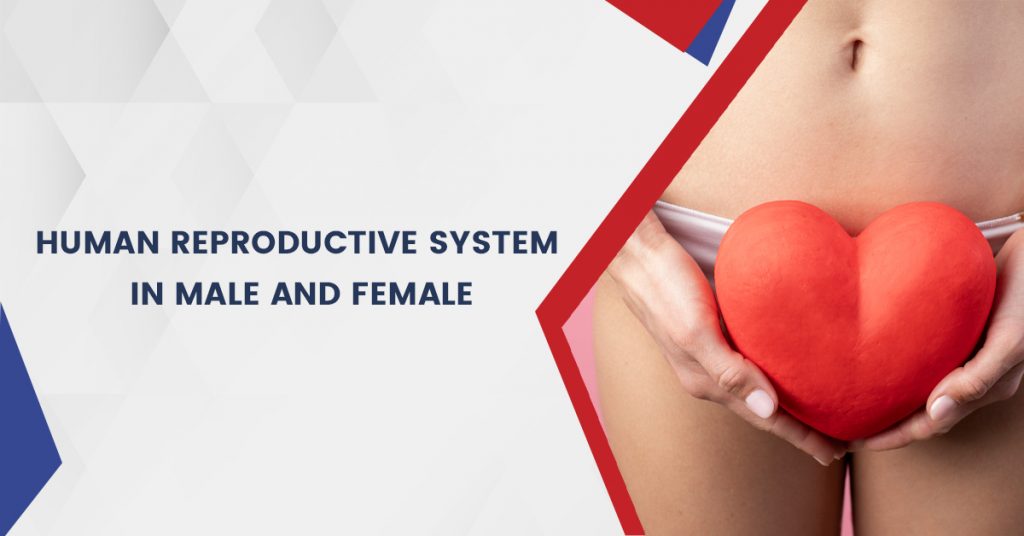Introduction of Human Reproductive:
Reproduction is the biological process of producing a new individual or a human offspring similar to the parents, with the male releasing sperm and the female providing ovum.
Points to be Noted:
- The male reproductive system comprises external organs. The testes present in the scrotum generate the male gamete, which is discharged in the seminal fluid by the penis.
- The female reproductive system contains internal organs. In the female gamete, the ovum is generated in the ovaries and is released monthly to reach the uterus through the Fallopian tube.
- Fertilization takes place only when the penis is inserted through the vulva present in the vagina, moreover, sperm is discharged towards the cervix. If an ovum is already in the uterus, then it can be fertilized by sperm, which anyway enters the cervix.
- Once fertilized, an ovum then changes into a zygote and grows into a fetus in the uterus.
- Birth happens when the fetus is pushed out from the vagina after nine months in the uterus.
Terms to be Noted:
- Penis- The male sexual organ for urination and copulation, in addition, to the tubular portion of the male genitalia.
- Vagina- A fibromuscular tubular area that is the female sex organ, which performs two crucial functions, sexual intercourse, and childbirth.
Human Reproductive System:
Human reproduction is the internal fertilization that takes occurs through sexual intercourse. During this process, the male penis is inserted into the female vagina until the male discharges semen (sperm) into the vagina. The sperm then travel through the vagina and cervix into the uterus for the fertilization of an ovum.
After the successful fertilization and implantation, the gestation of the fetus happens within the female uterus for about nine months. Once gestation ends with labor then this results in birth. In labor, the uterine muscles integrate, the cervix dilates, and the baby is taken out from the vagina. Human babies are helpless and so require special care from their parents. One necessary parental care is the use of mammary glands in the female breasts, which are used to feed the newborn.
Male Reproductive System:
The human male reproductive system is the organs found outside of the body and around the pelvic region. The role of the male reproductive system is to deliver the male gamete or spermatozoa for fertilization of the ovum. The major reproductive organs of the male can be grouped into three categories.
The first category is sperm production and storage. Production takes place in the testes, housed in the temperature-regulating scrotum. Immature sperm then travel to the epididymis for development and storage. The second category, the ejaculatory fluid-producing glands, comprises the seminal vesicles, prostate, and vas deferens. The final category, used for copulation and deposition of the spermatozoa (sperm) within the female, includes the penis, urethra, vas deferens, and Cowper’s gland.
Only our species has a unique mushroom-capped glans, which is connected to the shaft of the penis by a thin tissue of the frenulum. The coronal ridge below the gland around the circumference of the shaft.
Magnetic imaging studies of heterosexual couples having sex reveal that during coitus, the typical penis expands to fill the vaginal tract, and with push can even reach the woman’s cervix and lift her uterus. This combined with the fact that human ejaculate is expelled with great force and considerable distance suggests that men are made to pass sperm into the uppermost portion of the vagina.
This may be an evolutionary adaptation to expel the semen left by other males while at the same time increasing the possibility of fertilization with the current male’s semen.
Female Reproductive System:
The human female reproductive system is the organs found inside the body and around the pelvic region. It contains three major parts: the vagina, which leads from the vulva, the vaginal opening, to the uterus; the uterus, which holds the developing fetus; and the ovaries, which produce the female’s ova.
The breasts also play a crucial role during parenting but are not considered part of the female reproductive system. The vagina meets the outside at the vulva, which also includes the labia, clitoris, and urethra. During intercourse, this area is lubricated by mucus secreted by the Bartholin’s glands.
The vagina combines with the uterus through the cervix, while the uterus to the ovaries via the Fallopian tubes. After every 28 days, the ovaries release an ovum that passes through the Fallopian tube into the uterus.
If the ova are fertilized by sperm, it integrates into the endometrium and the fetus enhance. When fertilization does not take place in months, the lining of the uterus called the endometrium, and unfertilized ova are shed each cycle through a process known as menstruation.


